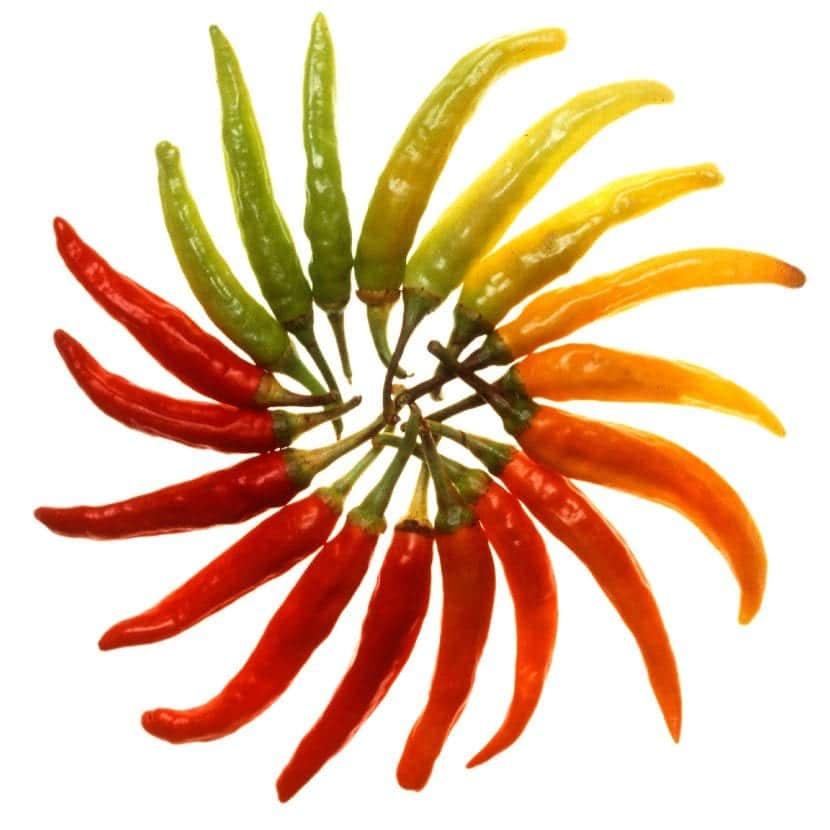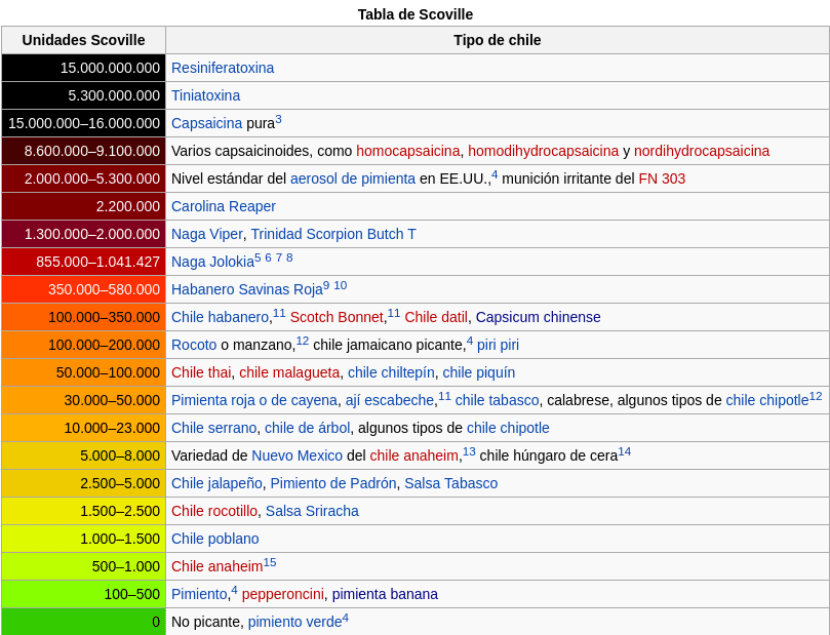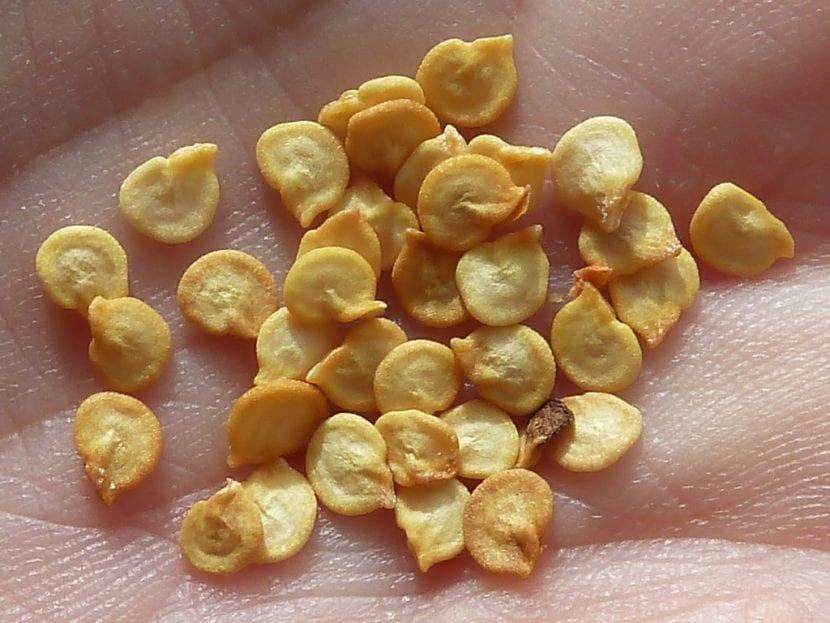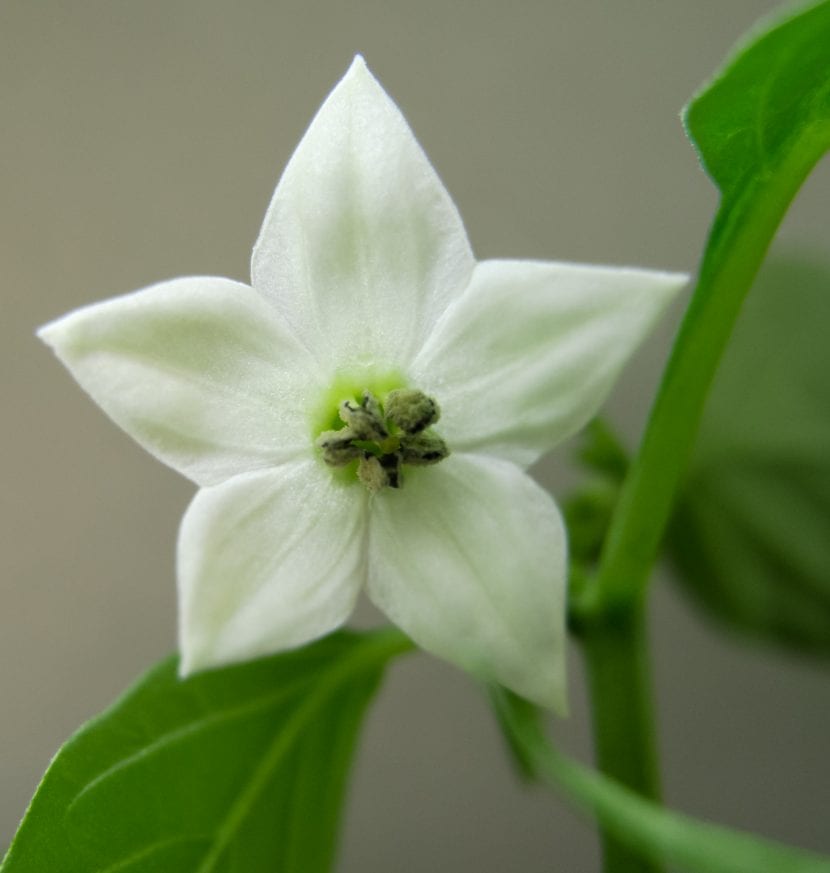
La chilli It is the pepper that not everyone would like to have on their plate. The flavor can become very spicy, to the point that, almost without meaning to, a farmer has created one that a single bite could cause you a serious problem.
However, the plants of the genus Capsicum, which are the ones that produce these vegetables, also have many followers. So, How are they grown?
Chili pepper characteristics

The chilli, also known as ají or chile, It is the fruit of the species of the genus Capsicum. These plants are native to the tropical and subtropical regions of America, and can be herbaceous or shrubby, with a normally annual cycle, although if the conditions are right they can live for several years.
Grows very quickly up to 2-4m. They have branched stems, with solitary or opposite 4-12cm long leaves, with petioles. The flowers sprout at the nodes of the leaves with the stem, and are formed by 4-5 petals (depending on the species and / or cultivar) of white, yellow, blue, purple or bicolor color.
The fruit, the so-called chilli pepper, is a hollow fleshy berry that when ripe turns yellow, orange, red or purple which can measure up to 15cm long. The seeds are flattened and yellowish.
Main species and cultivars
There are five species that are specially cultivated, which are:
- capsicum anum: which includes such well-known cultivars as cayenne, jalapeño or chile de arbol.
- Capsicum baccatum: which includes the South American yellow.
- capsicum chinense: which includes the spiciest, such as habanero or naga jolokia.
- Capsicum frutescens: includes the malagueta or the bird's eye.
- capsicum pubecens: which includes the South American rocotos and the apple tree grown in Mexico.
Why is it so spicy?

Image - Screenshot, Wikipedia
There are peppers that are not hot, and there are others that are too hot. For what is this? To a substance called capsaicin, which is concentrated in the whitish part that is inside the fruit, in small vesicles. Although up to ten different compounds have been discovered, this is the one that itches the most.
Depending on the variety and cultivar, even the person himself, it will bite more or it will bite less. The Scoville Scale is a measure of how hot peppers are based on how much capsaicin they contain. It was named in 1912 by Wilbur Scoville, who developed the Scoville Organoleptic Test, which consists of diluting a chili extract in sugar water until the spiciness can no longer be detected by a committee of examiners usually composed of five members.
So, for example, the jalapeño pepper has up to 5000 on the scale, which means that the extract was diluted up to 5000 times.
How is it grown?

Capsicum anuum seeds
Growing this plant is really simple, as you will see below:
Siembra
The seeds of the chilli pepper must be sown in the spring in the seedbed. As such, you can use a seedling tray, flowerpots, yogurt or milk containers, ... Regardless of what we use, it must have a hole for draining the water.
Once the seedbed has been chosen, we have to do the following:
- The first is fill it with universal growing medium (or garden) that we will find for sale in any nursery or garden store.
- Then we place the seeds on the surface leaving a distance of three centimeters between them.
- Then we cover them a little, enough so that the wind does not carry them away.
- Now we put the seedling on a tray or on a plate.
- Y finally we water below, that is to say, directing the water towards the interior of the tray or plate.
The seeds will germinate throughout the week.
Transplant
When the plants have reached a height of about 10cm, we can transfer them to individual pots or to the garden. How to proceed in each case ?:
Pot transplant
- We carefully extract them from the seedbed. In the case of two joints, we can carefully remove the substrate from the roots and separate them.
- Now we fill the pot, which must be at least 30cm in diameter, with universal culture substrate mixed with 30% perlite.
- Then with your fingers or a small stick, we make a hole in the center. It does not have to be too deep, just enough so that the plant can fit well, that is, neither too high nor too low relative to the rim of the container.
- Then, we planted plant.
- Lastly, we water well and we place it in an area with lots of light but where it can be protected from direct sun until growth is seen.
Planting in the garden
- First of all, you have to Preparing the terrain. To do this, the stones and grasses have to be removed, and the drip irrigation system installed.
- Now we can plant the chillies in rows, leaving a distance of about 40cm between them.
- Then, we water them conscientiously, soaking the earth well.
- For it to grow well, it is recommended put a layer about 2cm thick of organic compostas manure.
Maintenance
Now that the seedlings are in their final locations, we have to know how to care for them. So that problems do not arise, we advise you the following:
- Irrigation: irrigation has to be frequent, 3-4 times a week.
- Subscriber: as they are plants whose fruits are for human consumption, they have to be paid with organic fertilizers. If they are potted, those that are sold in liquid form will be used so that the drainage continues to be good; On the other hand, if they are in the garden, you can use powdered fertilizers.
- Pruning: It's not necesary.
Harvest

When to harvest the chillies will depend on the species and cultivar, but generally we can start harvesting them 3-4 months after sowing, when they have the final color.
And with this we are done. Did you find it interesting? 🙂